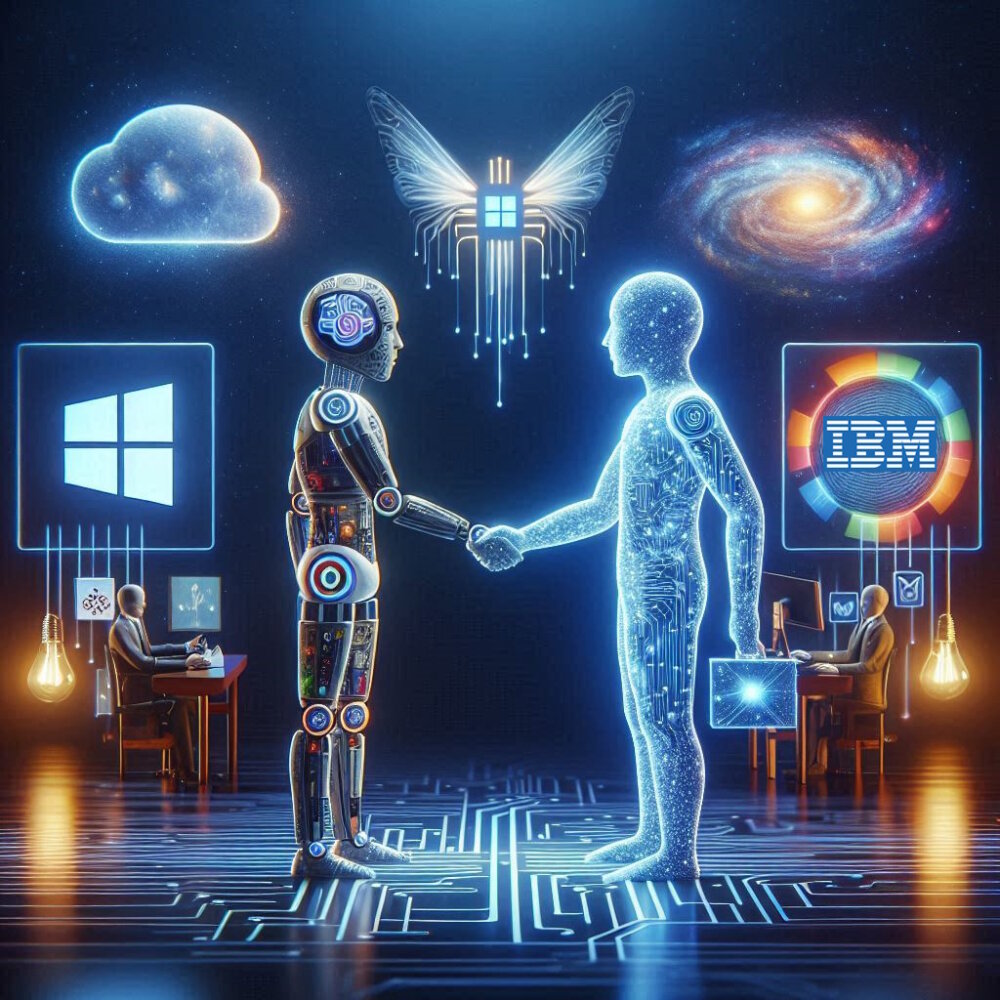
How 1995 “Clueless” could help fashion’s sustainability problem
TechFinitive x FlashForward is our exclusive newsletter. Every fortnight, we pick a technology featured in a classic movie and fast forward to where it’s at today. Subscribe to it on Substack so that you’re notified every time a new edition goes out. This edition was originally published on the 28th of October.
Flashback: Cher Horowitz is a way normal teenager – after all, doesn’t everyone live in a mansion and choose their clothes via a high-tech computer system? In the film’s opening scene, Cher (played by Alicia Silverstone) fires up some software called ‘Cher’s Wardrobe’ on her PC and, to the tune of David Bowie’s song ‘Fashion’, scrolls through a catalogue of skirts and cute tops. Seeing a combo she likes, she hits a button marked ‘Dress me’. The first outfit flashes up a ‘Mis-match’ warning. But her next outfit is on point. The software overlays this yellow plaid ‘fit onto a photo of Cher so she can see how she’ll look — and then a motorised wardrobe rail delivers the actual outfit. Mmmm, fashion!
Flashforward to today: Apps like Cher’s Wardrobe are already benefiting real-life wearers and sellers of clothes — and even helping with fashion’s disastrous sustainability problem. One part of Cher’s system is much more complicated, even today.
The actual interface for Cher’s wardrobe is pretty basic. Once you’ve photographed every item of clothing in your wardrobe, it isn’t difficult to place them onto a photo of yourself. In real life, you can catalogue all your clothes and log what you wear each day with apps like Stylebook.
Modern digital “try-on” apps go one better. Clothes retailers use augmented reality (AR) to show what you’d look like in an outfit before you buy it — and instead of a static photo, you can pose live and in real-time.
Augmented reality takes the real world in front of you and adds digital elements such as text, images or animations on top of what you can actually see. AR is more accessible than virtual reality because VR requires a headset, and while there are AR devices like the ill-fated Google Glass or Qualcomm Smart Viewer, all you really need is a smartphone. Pokemon Go is a wildly popular AR game, for example.
Related reading: What is augmented reality?
AR try-before-you-buy apps began with software like Zugara’s Webcam Social Shopper in 2009, followed by Debenhams’ virtual changing room in 2011 and Uniqlo’s Magic Mirror in 2012. Initially, you didn’t get much sense of size or fit. But in more recent years companies like Zeekit, 3DLook, DressX, Rtfkt and Body Labs have advanced AR try-on technology. ASOS and Adidas have got in on the action, while brands like Gucci, H&M and Calvin Klein have introduced social media filters to show off their wares. Retailers are collaborating with designer brands, like Farfetch and its Snapchat filter to virtually try on Virgil Abloh’s Off-White collection.
Initially, the technology worked best with large and relatively shapeless items like puffa coats. In the latest AR apps, the speed and processing power of generative artificial intelligence map your body as you stand there. Using similar technology to the computer-generated imagery used in movies, apps create a 3D mesh of your body and layer fabric simulation on top in real time. A cloth sim recreates how a virtual garment drapes and folds across your body as it would if you were really wearing it, adding to the realism.
The goal for retail AR solutions is to make you really feel what it’s like to own that item — or what you’re missing if you don’t. That establishes an all-important emotional urge to hit the Buy button.
Related reading: Can these AR glasses replace screens?
This has more business sense than just being a fun gimmick for customers. Customers who visualise an item in their lives have more confidence to buy online, which was a major issue for fashion retailers when brick-and-mortar stores were closed during the pandemic. Customers also engage with a catalogue for longer when they’re playing with AR, which gives a greater opportunity to upsell and cross-sell and increase a customer’s average order value (an important number known in the business as AOV).
There’s also an interesting feedback loop at play with AR apps. When a retailer is able to map your body, they’re able to collect and analyse data on their customers. They can see how customers try clothes or even get an idea of realistic body shapes — useful information in an industry which often relies on wildly inconsistent (and often outdated) sizing.
There’s a sustainability benefit to try-on apps too. The clothing industry, and cheap high-turnover “fast fashion” in particular, is a horrifyingly massive polluter. Returned items are a real problem: in the UK, a fifth of clothes bought online are returned, but retailers don’t just dust off these unloved items and stick ’em back on shelves ready for the next shopper. Many returned items end up in landfills, often in the developing world.
But if you can get the size right even when you don’t have the garment in your hands, you’re more likely to buy the right size the first time. You also don’t need to buy multiple sizes to try on at home. This cuts down on returns, which reduces the need for retailers to over-produce clothes and reduces the cost of processing returned items. Best of all, it’s good for the planet as fewer unwanted items get dumped.
There is one element of Cher’s Wardrobe that should stay in the realm of fiction, however. For a piece of software to declare an outfit a mismatch, it would need to understand the vastly complicated nuances of fashion and then apply those nuances to a given outfit. It’s possible that modern artificial intelligence could be trained on fashionista rulebooks from Beau Brummell to back issues of Vogue. But the only rule of style is that there are no rules, and no human should ever let a computer tell you what looks good. Dress to impress!
Who should make one?
The fast fashion industry is a significant polluter, and anything which cuts down on discarded items is a winner for the planet. So retailers can offer try-on apps as much as they like — but it’s worth remembering that their real impact will come from a circular economy, and simply buying fewer clothes. So try on those virtual clothes to your heart’s content, but take a leaf out of Cher’s book and always start by delving into the wardrobe for clothes you already wear.
Fun fact
Clueless writer and director Amy Heckerling wanted Alicia Silverstone to play Cher right from the start but also considered Angelina Jolie, Reese Witherspoon, Alicia Witt, Brittany Murphy and Keri Russell for the role. For the male parts, young actors who auditioned included Ben Affleck, Jeremy Renner, Seth Green, Zach Braff and Dave Chapelle!
The Cher Horowitz Award for Art Appreciation
AR can also be used to visualise stuff in your home. With the Ikea Place app or Saatchi Art experience, you can point your phone at any room in your house and see that piece of Swedish furniture or valuable artwork right there in front of you. The app matches the lighting conditions in your room and the angle you’re holding the camera, so you can walk around the furniture or artwork and it seems as real as possible. Which may be the closest any of us get to having a Saatchi artwork in our home.
Verdict
Cher Horowitz was a fashion trendsetter, but who knew she was pioneering technology that’s helping steer the fashion industry into better habits decades later? We’re totally buggin’ at the clothing industry’s impact on the environment, so maybe it’s time to give AR try-on tech a try.
Now, try these!
Creating Clueless’s iconic costumes
An oral history of Cher’s closet and the visual effects that went into it
Speaking of which…
- Fairphone 5 vs iPhone 15: which is more ethical?
- Time machines and instant superpowers: how virtual reality is changing architecture
NEXT UP

Alexey Kalachik, CEO & Co-Founder at Fively: “The potential for digitalisation within insurance is enormous”
We interview serial entrepreneur Alexey Kalachik, CEO & Co-Founder at Fively, on the future of fintech and what makes this space so exciting for startups.

IBM bolsters AI push with Microsoft Copilot launch
In a bid to boost its AI offering, IBM Consulting will enable enterprises to create and manage AI copilots – including Copilot for Microsoft 365

Andrew Kay, Director of Systems Engineering APJ at Illumio: “The most worrying development with ransomware is that it has evolved from simply stealing data to impacting IT availability”
Andrew Kay, Director of Systems Engineering APJ at Illumio, has 20 years’ experience helping organisations strengthen their cyber resilience. We interview him as part of our Threats series on cybersecurity.
